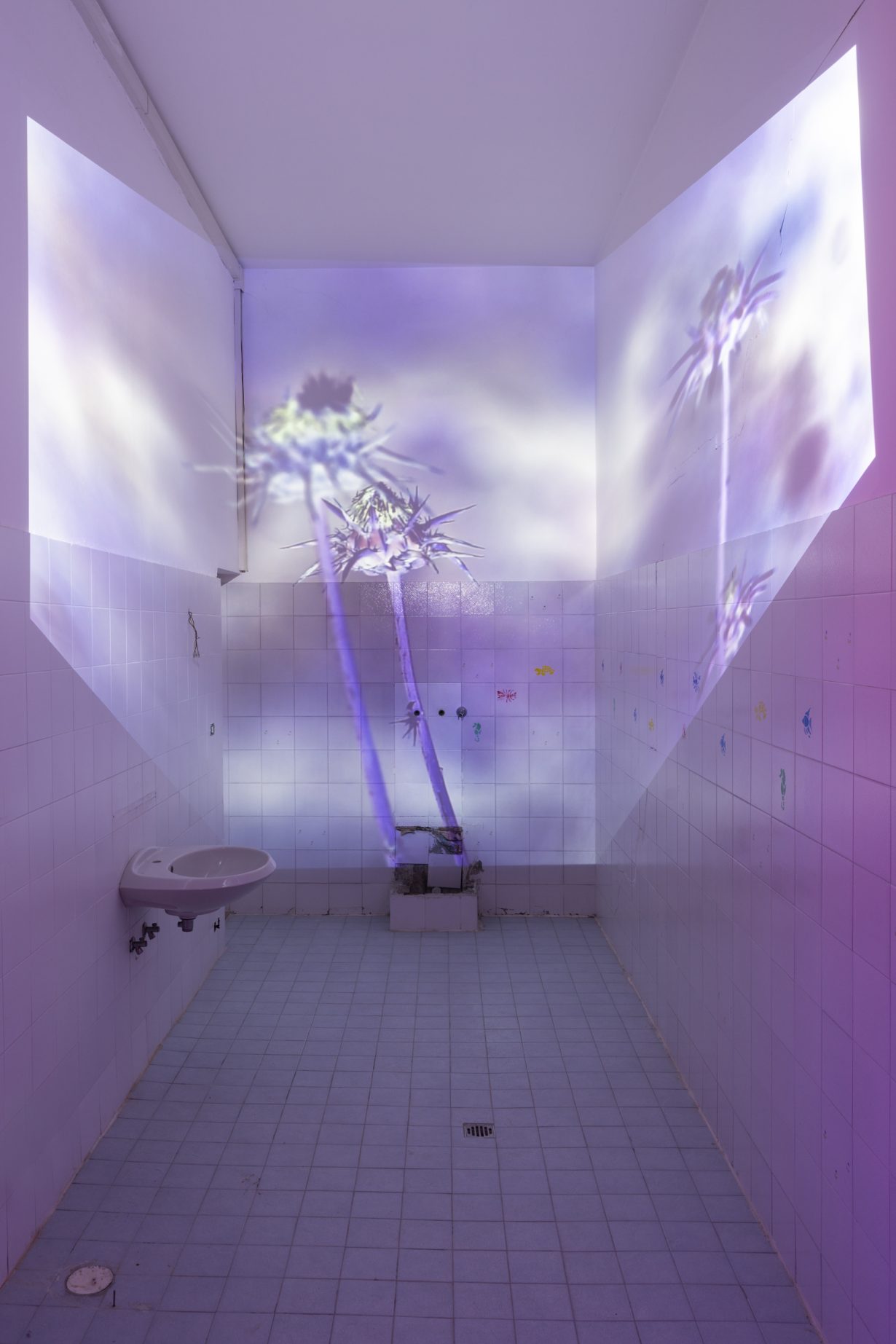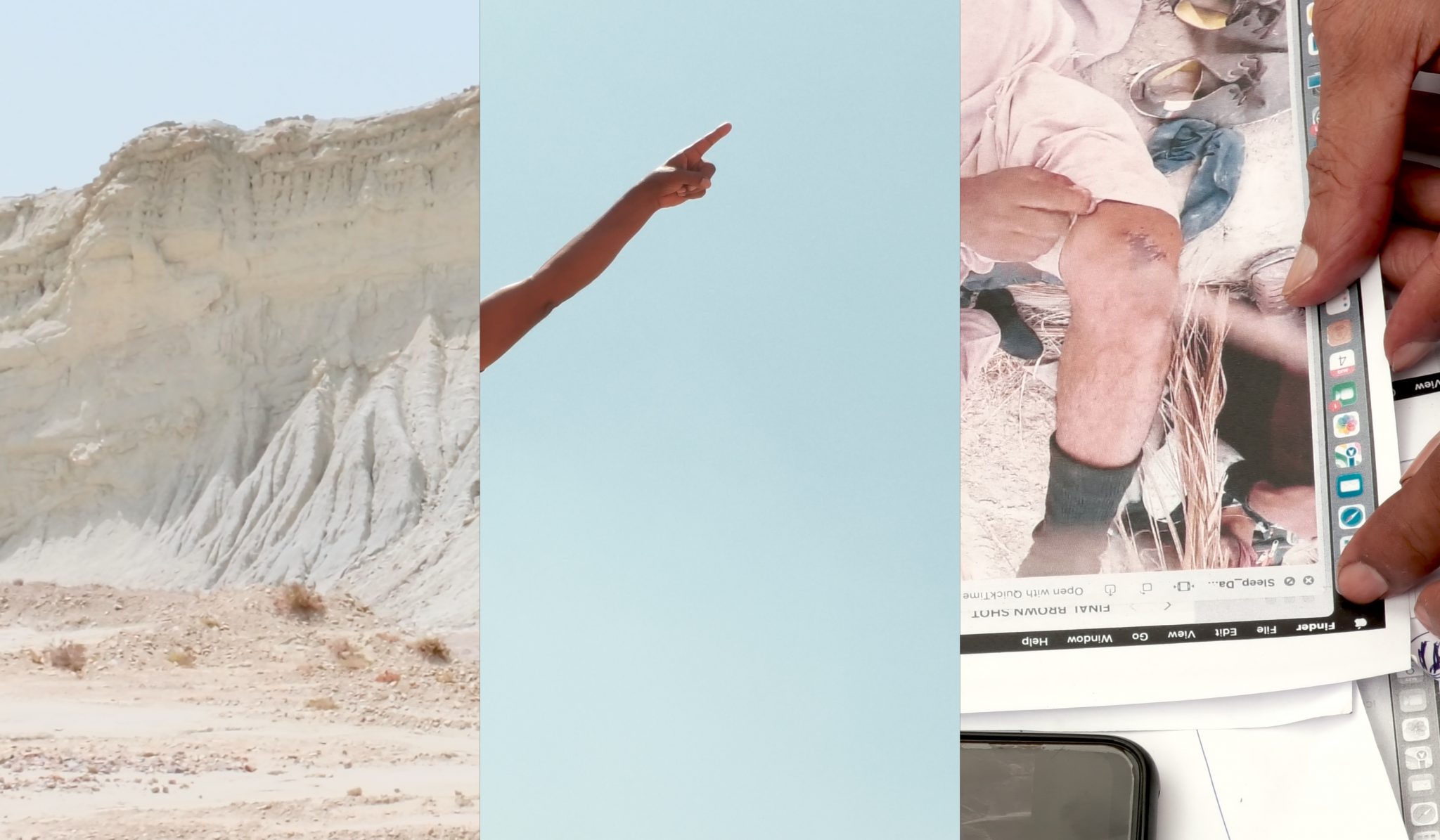Nebula at Complesso dell’Ospedaletto collects videoworks that revolve around incomplete visibility, disorientation – and resistance to it
The word Nebula is Latin for ‘fog’ or ‘cloud’, but in the case of this show it embraces eight newly commissioned, site-specific video installations totalling over three hours of screening time. All eight productions explore the poetic associations of fog, an atmospheric phenomenon characteristic of Venice; the works revolve around incomplete visibility, disorientation – a condition that, in many ways, characterises the present – and resistance to it. The exhibition is housed within a sprawling venue that, during the sixteenth century, housed the sick, pilgrims and orphans, later a church, a pharmacy, a concert room, and in more recent times a wing of a retirement home. There is a lot to take in. And yet, despite its name, Nebula lingers in the mind, while also engendering a very Venetian sense of labyrinthitis. The organisers, Fondazione in Between Art Film, have achieved this through a sophisticated use of the space, which makes elements of the works’ content seem to spill over into the rooms in which they are screened.
This is palpable in the opening installation. Basir Mahmood’s Brown Bodies in an Open Landscape are Often Migrating (2024) shares a glimmering lighting with its site, the monumental church of Santa Maria dei Derelitti. The three-channel video, its format inspired by altarpieces, is shot across day as it turns to night, with sequences of actors lost in a vast landscape, and is based on video taken by migrants travelling from South Asia to Europe. The scenes are shot from below, recalling how church architecture is conceived to make you look up. Meanwhile, the soundtrack underscores a contrast between what we see and hear, generating a state of acoustic nebulosity. You might hear pens writing on paper, or the sound of lips moving while people speak into megaphones, but not the words they utter.

The geopolitical associations of this work, with its focus on instability, are doubled in Basel Abbas and Ruanne Abou-Rahme’s Until we became fire and fire us (2023–), which consists of slanted projections haunting different rooms entered via the squalid upstairs corridors of the retirement home. The result of this makeover is a dizzying and fragmented accumulation of images of drawings (made by Abou-Rahme’s father during the 1970s and 80s in Jerusalem), pulsating sounds, words and found video clips. For the latter, Abbas and Abou-Rahme have drawn on an extensive video archive that primarily comprises people singing and dancing, people from Iraq, Palestine, Syria and Yemen who are mostly from communities under threat of being erased. These scenes are juxtaposed with footage of indigenous plants; both elements, it seems, play the role of witnesses to the experience of colonisation and possession.
From the outset, Nebula’s atmosphere is mesmerising. The corridors are muffled by sound-absorbing materials – dark fabric, white quilts and an unexpectedly soundless aluminium floor – which reset visitors’ perceptions between one film and the next. Both the white cube and black box formats are obliterated in this encompassing, distorted spatial experience; it’s like floating in a zero-gravity spaceship. Appropriately, in English ‘nebula’ is the medical term for a cloudy speck or film on the eye that would blur one’s vision, as well as being used since the early 1700s as an astrological term for dust and gas cloud in space. Yet despite its deliberate disorientations, the show imprints certain images in one’s memory. In Christian Nyampeta’s When Rain Clouds Gather (2024), two little girls jump on a trampoline, while a radio in the distance broadcasts news of genocides in Rwanda, Palestine and Ukraine. In Diego Marcon’s digital animation Fritz (2024) – presented in a room where, during the eighteenth century, patients found relief in music – a cartoonish boy hangs by a rope who, just when he seems to have died, kicks the wall and continues swinging from the noose, resuming the unlikely yodelling that connects him with a distant choir of voices. Playing in a loop, the video’s incessant rhythm has a ferocious irony. Sound lingers in the ear, too: in Giorgio Andreotta Calò’s Nebula (2024), a bell seems to guide a sheep into and through the Complesso, as it moves from room to room in apparent response. We follow it from a sheepfold to its apparent awakening in Santa Maria dei Derelitti; it then wanders through the spaces of the Ospedaletto, before a thick fog rises from the helical staircase and swallows everything up. You, the viewer, are evidently another sheep, led through Nebula’s exploration of how space might be haunted by moving images, and throughout which moments of quiet reprieve might be found amid abundant perceptual and political upheaval.
Nebula at Complesso dell’Ospedaletto, Venice, through 24 November
